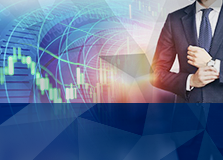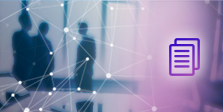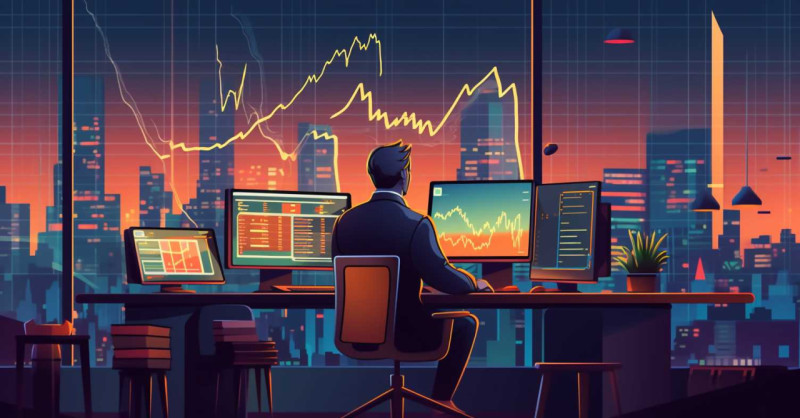
Introduction
In today's interconnected and digitized world, the financial markets pulse with a rhythm that's both rapid and relentless. Central to navigating these intricate dances of numbers, charts, and global economics are trading terminals. These software solutions, evolving steadily from rudimentary data display systems to the advanced multi-functional platforms of today, serve as the nerve center for traders spanning the spectrum from individuals in their home offices to professionals in bustling trading floors of global financial capitals.
At its essence, a trading terminal acts as a gateway, granting traders the keys to the vast expanse of financial markets. These terminals are not just passive windows but proactive tools, enabling traders to dissect market data, spot emerging trends, and position their trades, all in real-time. The sheer breadth of capabilities they offer has transformed them from mere utilities to crucial allies in a trader's journey.
The rise and significance of trading terminals in modern financial markets cannot be overstated. The markets today are a complex web of data points, geopolitical events, economic indicators, and trader sentiment. Assets can swing dramatically based on a tweet, a news headline, or an unexpected economic report. In such an environment, where fortunes can be made or lost in a heartbeat, access to real-time data and sophisticated analysis tools is not just advantageous – it's vital. Trading terminals provide this access, ensuring that traders are not just spectators but informed participants, equipped with the tools to make strategic decisions.
This article promises a deep dive into the realm of trading terminals, examining their evolution, their transformative impact on trading, and their undeniable significance in the financial markets of the 21st century. Whether you're an experienced market maven or a novice still understanding the ABCs of trading, getting acquainted with the capabilities and potential of trading terminals is imperative. Join us as we embark on this exploration, shedding light on the powerhouse that fuels modern trading.
History of Trading Terminals
Evolution from floor trading to electronic trading
The journey of trading terminals is a fascinating tale of innovation, mirroring the larger evolution of the financial markets themselves. It's a story that begins in the cacophonous trading floors of yesteryears and leads to the sophisticated digital landscapes of today.
1. The Era of Floor Trading:
Before the digital revolution, trading was a predominantly physical affair. Major financial hubs around the world boasted trading floors where brokers, armed with hand signals and shouting, would manage their clients' orders. These trading pits, as they were commonly referred to, were defined by their palpable energy, chaos, and the iconic image of traders rushing about with papers in hand.
Open Outcry System: This was the primary method of communication on the trading floors. Traders used a combination of hand signals and vocal expressions to convey vital information like the type of order, the price, and the quantity of the asset.
Limitations and Challenges: Floor trading, though effective for its time, had its share of challenges. The method was prone to errors, given the cacophony and chaos of the trading floor. It also posed limitations in terms of speed, with orders sometimes getting delayed due to the manual process.
2. The Advent of Electronic Trading:
The latter half of the 20th century saw technology slowly creeping into the domain of financial markets. Computers began to play a more pivotal role, leading to the first instances of electronic trading.
Early Innovations: The 1970s marked significant strides in electronic trading. One of the pioneers was the NASDAQ, which debuted in 1971 as the world's first electronic stock market. It wasn’t a trading terminal in the modern sense but was a significant step towards digitizing trade-related information.
Transition to Digital: The late 1980s and the 1990s were transformative. Systems like Reuters 3000 and Electronic Communication Networks (ECNs) paved the way for real-time data sharing and direct trading without the need for intermediaries.
3. Birth and Evolution of Modern Trading Terminals:
As technology advanced, so did the capabilities of electronic trading platforms. The demand for faster, more efficient, and comprehensive tools led to the development of modern trading terminals.
Comprehensive Solutions: Today's trading terminals offer a suite of features. From real-time data feeds to complex algorithmic trading capabilities, they cater to the diverse needs of traders.
Global Accessibility: Modern terminals have democratized access to global financial markets. A trader in Tokyo can now seamlessly invest in the New York Stock Exchange or the London Stock Exchange at the click of a button, thanks to these platforms.
In conclusion, the transformation from floor trading to electronic trading showcases humanity's undying spirit of innovation. What started as a manual, chaotic process has now been refined into a streamlined, efficient, and global operation, all thanks to the evolution of trading terminals. The journey underscores the importance of adaptability and the constant quest for improvement in the world of finance.
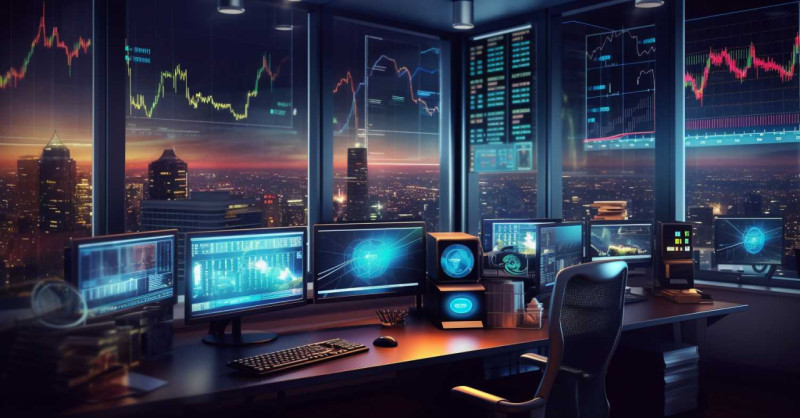
The role of technology in reshaping the trading landscape
As we trace the history of trading terminals, it becomes abundantly clear that technology has played the central role in their evolution. The metamorphosis from the tumultuous trading floors to the sleek digital interfaces of today is a testament to how technology has continually redefined the contours of the trading landscape.
1. The Pre-Digital Age: Physical Constraints
Trading Floors: Historically, trading was an intensely physical act. Traders jostled in crowded pits, vocally expressing their buying or selling intentions through what was known as the "open outcry" system. These trading floors, epitomized by venues like the New York Stock Exchange, were hubs of frenetic activity.
Challenges: The face-to-face nature of these exchanges meant limited reach and scale. It also made trading susceptible to human errors, miscommunications, and inefficiencies.
2. Dawn of the Electronic Age: Initial Forays into Digital Trading
Electronic Bulletin Boards: Before full-fledged electronic trading systems, electronic bulletin boards served as preliminary platforms for brokers to list buy and sell orders, marking a break from the traditional floor trading.
The NASDAQ Milestone: Launched in 1971, NASDAQ became the world’s first electronic stock market, using telephones and computer terminals rather than the trading floor. This was a foundational shift, highlighting the potential of technology in transforming trading.
3. Birth of Modern Trading Terminals: Harnessing the Power of Computers
From Basic to Advanced: Initial electronic systems were basic, often offering only trade execution. But as computing power grew exponentially, so did the capabilities of trading terminals. They evolved to provide advanced charting, real-time data feeds, analytical tools, and more.
Proliferation of Platforms: The late 1990s and early 2000s saw an explosion in the number of available trading platforms, with software like MetaTrader emerging as a favorite among retail traders. These platforms allowed individuals to execute trades directly, bypassing traditional brokers.
4. Connectivity and the Internet: Expanding Horizons
Global Reach: With the rise of the internet, trading terminals broke geographical barriers. Traders anywhere in the world could now access global markets with ease. This democratization of finance was revolutionary.
High-Frequency Trading (HFT): Internet speeds and computational advancements gave birth to HFT. Algorithms, executing thousands of orders in fractions of a second, became significant market players, reshaping trading dynamics.
5. Current Landscape: AI, Mobile Trading, and Beyond
Artificial Intelligence and Machine Learning: Modern trading terminals now incorporate AI and ML for predictive analytics, offering traders insights previously unimaginable.
Mobile Revolution: The ubiquity of smartphones has led to the rise of mobile trading apps, allowing traders to manage their portfolios on the go, ensuring they never miss a market move.
Decentralized Trading: With the advent of blockchain technology, decentralized exchanges and trading platforms are emerging, further transforming the trading ecosystem.
In wrapping up, the story of trading terminals is, in essence, the story of technology's transformative power. Each advancement, from rudimentary electronic boards to AI-driven platforms, underscores technology's pivotal role in shaping, expanding, and revolutionizing the trading world. As we stand on the cusp of further technological innovations, one can only imagine the next chapters in this ever-evolving narrative.
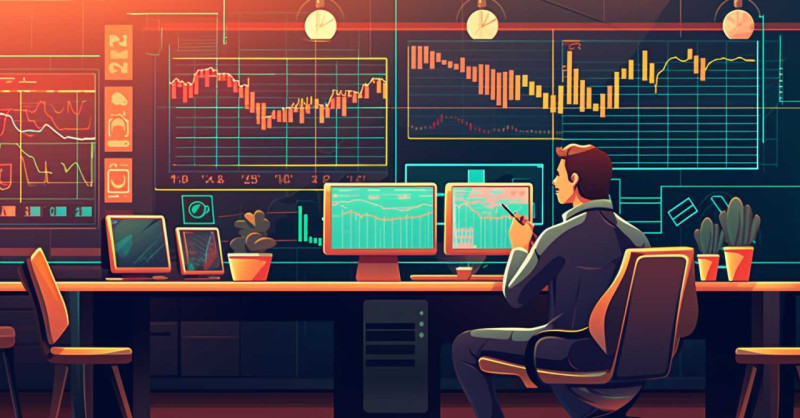
Basic Features of Trading Terminals
Real-time data feed
Trading terminals have become the modern trader's cockpit, offering a comprehensive suite of tools to navigate the financial skies. One of the foundational features of these terminals, critical for timely and informed decision-making, is the real-time data feed. Let's delve into its significance, functionalities, and the advantages it brings to traders.
1. What is a Real-Time Data Feed?
A real-time data feed is a continuous stream of live market information, updating traders instantly on price movements, volumes, news, and other pertinent market metrics. Unlike delayed or end-of-day data, real-time feeds give traders the most current snapshot of market conditions.
2. Components of Real-Time Data Feeds:
Price Information: This includes the latest bid and ask prices, along with the last traded price of financial instruments.
Volume Data: Real-time volume data shows the number of contracts or shares traded for a particular asset, providing insights into its liquidity and demand.
Order Book: The order book displays pending buy and sell orders in the market, giving traders a sense of supply and demand at different price levels.
News and Announcements: Instant updates on market-relevant news, earnings reports, and economic releases.
3. Significance of Real-Time Data Feeds in Trading:
Informed Decision Making: With markets being highly dynamic, decisions made on stale data can be disastrous. Real-time feeds ensure traders make choices based on the most recent market conditions.
Timely Trade Execution: Especially crucial for day traders and scalpers, real-time data allows traders to quickly capitalize on fleeting market opportunities.
Risk Management: Immediate access to market changes allows traders to promptly adjust or close positions if the market moves against them.
Enhanced Analysis: Real-time data feeds are vital for various technical analysis tools, from simple moving averages to complex algorithmic strategies. Without live data, these tools would lose their effectiveness.
4. Enhancing Real-Time Data with Advanced Trading Terminals:
Custom Alerts: Modern terminals allow traders to set custom alerts based on real-time data. For instance, a trader can be notified immediately when a particular stock hits a predetermined price.
Overlaying Indicators: Real-time data can be augmented with technical indicators, helping traders interpret market movements more effectively.
Integrating News Feeds: Some advanced terminals merge real-time data with news, giving traders a holistic view by juxtaposing price movements with relevant news events.
In conclusion, the real-time data feed is the lifeblood of any trading terminal. It's the primary source from which all other functions and tools draw. In an environment as fast-paced as the financial markets, having access to live, instantaneous data isn't just an advantage—it's an absolute necessity. As technology continues to advance, we can expect real-time data feeds to become even more integrated, intuitive, and indispensable to the modern trader.

Technical and fundamental analysis tools
Trading terminals today are multi-faceted platforms that cater to both technical and fundamental traders. The tools provided for these types of analyses are vital in helping traders form opinions, make decisions, and ultimately execute trades. Let's dive deep into the core technical and fundamental analysis tools typically found in modern trading terminals.
1. Technical Analysis Tools
Technical analysis is based on the study of past market data, primarily price and volume, to forecast future price movements. The tools designed for this type of analysis are:
Price Charts: At the heart of technical analysis, price charts (like line, bar, and candlestick charts) visually represent price movements over specified periods.
Indicators and Oscillators: These mathematical calculations are used to predict future price movements. Examples include the Moving Average (MA), Relative Strength Index (RSI), Moving Average Convergence Divergence (MACD), and Bollinger Bands.
Drawing Tools: Used to mark trendlines, support and resistance levels, channels, and other significant price patterns on charts.
Timeframes: Allows traders to view price data over different periods, from 1-minute charts for short-term traders to monthly charts for long-term trend followers.
Backtesting Platforms: Some advanced terminals offer backtesting tools, enabling traders to test their strategies against historical data to determine their viability.
2. Fundamental Analysis Tools
Fundamental analysis focuses on evaluating an asset's intrinsic value by examining related economic, financial, and other qualitative and quantitative factors.
Economic Data & Calendars: Offer a schedule of upcoming economic events, data releases, and announcements that can impact markets.
Financial News Feeds: Real-time news updates that inform traders about the latest happenings that might affect asset prices.
Financial Statements Analysis: For stock traders, tools that allow in-depth examination of a company's balance sheet, income statement, and cash flow statement.
Earnings Reports: Critical data points for stock traders, these reports provide insights into a company's profitability.
Valuation Ratios: Tools that calculate ratios such as Price-to-Earnings (P/E), Price-to-Book (P/B), and Dividend Yield, assisting traders in gauging whether an asset is overvalued or undervalued.
Sectoral Analysis: Provides data and tools to analyze specific industries or sectors, enabling traders to make comparative assessments of companies within the same sector.
3. Integrating Technical and Fundamental Analysis:
While many traders lean predominantly towards one form of analysis, modern trading terminals offer the flexibility to integrate both.
Overlaying News on Charts: Some platforms allow news events to be marked directly on price charts, giving a visual representation of how news events impact price movements.
Customizable Workspaces: Traders can customize their terminal interface to simultaneously display both technical charts and fundamental data feeds, allowing for a comprehensive analysis environment.
In summary, the dual toolsets of technical and fundamental analysis provided by trading terminals are indispensable in today's trading environment. These tools, when used effectively, can offer traders a robust framework for decision-making, risk management, and strategy execution. As technology continues to evolve, we can anticipate even more sophisticated and integrated tools to emerge, further enriching the trading experience.
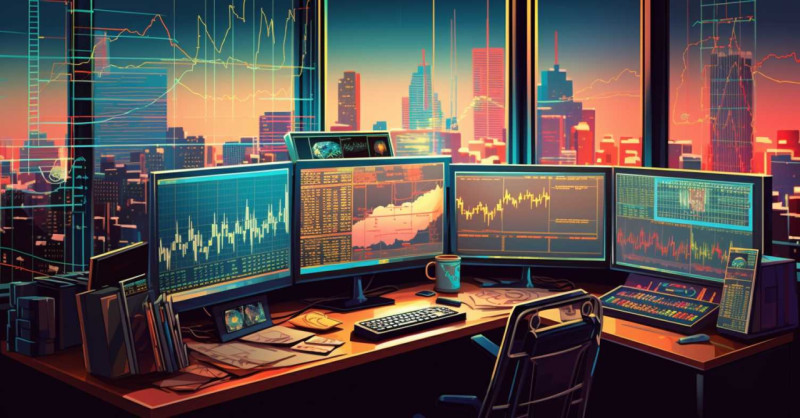
Order execution capabilities
At their core, trading terminals facilitate the act of trading, allowing users to buy or sell financial instruments. This action is accomplished through various order execution capabilities that trading platforms offer. These capabilities ensure that traders have flexibility, precision, and control over their trades. Let's explore the fundamental order execution features in modern trading terminals.
1. Types of Orders
Market Orders: These orders are executed immediately at the prevailing market price. Traders use market orders when they want a quick entry or exit, ensuring that the trade is executed but not necessarily at a specific price.
Limit Orders: Traders specify the price at which they are willing to buy or sell. The order will only be executed if the market reaches the set price.
Stop Orders (or Stop Loss Orders): This is a preset order to buy or sell once the stock reaches a specific price. Traders use stop orders to limit losses or protect profits.
Stop-Limit Orders: A combination of stop and limit orders. Once the stop price is reached, the order becomes a limit order to buy or sell at a specified price.
Trailing Stop Orders: These orders set a stop price at a fixed amount or percentage away from the market price. As the market price moves favorably, the stop price will adjust, allowing traders to protect profits.
2. Advanced Order Features
One Cancels the Other (OCO): A pair of orders wherein if one order is executed, the other is automatically canceled. Useful for traders who have multiple strategies in place.
Iceberg Orders: Large orders that are divided into smaller lots, with only a portion of the order (the "tip" of the iceberg) visible to the market.
Time in Force: Conditions that traders can use to specify how long an order remains active. Common options include Day (expires at the end of the trading day) and Good-Till-Canceled (GTC), which remains active until the trader cancels it.
3. Order Confirmation and Modification
Order Confirmation: Before finalizing a trade, many platforms provide a confirmation window detailing the specifics of the order. This feature helps reduce inadvertent errors.
Order Modification: Post-placement, some platforms allow traders to adjust the parameters of their orders, be it the price, quantity, or other conditions.
4. Order History and Tracking
Active Orders: A real-time list of all orders that are currently active, allowing traders to monitor, modify, or cancel them as necessary.
Order History: Provides a log of all executed, canceled, and rejected orders. It's an essential tool for record-keeping and performance review.
5. Automated and Algorithmic Trading
Automated Strategies: Some terminals offer the capability for traders to automate their strategies, wherein trades are executed automatically based on predefined criteria.
Algorithmic Orders: These are advanced orders executed using complex algorithms to achieve various objectives, like minimizing market impact or executing a large order at the best possible price.
In conclusion, order execution capabilities form the backbone of any trading terminal. These features offer traders the control and flexibility they need to navigate the complex and fast-paced world of financial markets effectively. As technology continues to progress, trading platforms will undeniably introduce even more sophisticated and nuanced order execution tools, enhancing the trading experience further.
Security and encryption measures
In the digital age, the security of data and funds is paramount for traders. With the rise of cyber threats, trading terminals have prioritized advanced security and encryption measures to ensure that users' information and assets remain protected. This section sheds light on the integral security features that modern trading platforms incorporate to safeguard users.
1. Data Encryption
Secure Socket Layer (SSL) Encryption: A standard security technology for establishing an encrypted link between a web server and a browser. It ensures that all data transmitted remains private and integral.
End-to-End Encryption: Ensures that data, whether it be trading commands or financial data, is encrypted from the moment it leaves the trader's device until it reaches its final destination and vice versa.
2. Two-Factor Authentication (2FA)
An extra layer of security used to ensure that traders accessing a trading account provide two pieces of identification. This typically includes something they know (a password) and something they possess (a code sent to their phone or email).
3. Secure Login Processes
Biometric Access: Advanced platforms offer fingerprint or facial recognition as a method to access trading accounts, ensuring a higher level of security than traditional passwords.
Automatic Logout: If a user remains inactive for a specified period, the system will automatically log them out to prevent unauthorized access.
4. Regular Security Audits
Most reputable trading terminals undergo periodic security audits by third-party firms to identify and rectify potential vulnerabilities.
5. Backup and Recovery Systems
In case of data loss or system failures, trading terminals have robust backup systems in place. This ensures data integrity and allows for quick recovery, minimizing potential downtime.
6. Cold and Hot Wallets (for Crypto Trading Terminals)
Cryptocurrency trading platforms often use a combination of cold (offline) and hot (online) wallets. Cold wallets store the majority of funds and are not connected to the internet, safeguarding them from online hacking attempts.
7. Anti-Phishing Measures
To prevent phishing attacks, platforms might incorporate features like color-coded browser bars, routine security notifications, and warnings about unrecognized devices or locations attempting to access an account.
8. Firewall and DDoS Protection
Trading platforms use advanced firewalls to filter incoming and outgoing traffic, blocking potential threats. Additionally, Distributed Denial of Service (DDoS) protection mechanisms ensure platforms remain operational even under malicious high-traffic attacks.
9. Monitoring and Alerts
Real-time monitoring systems scrutinize trading activities to detect unusual patterns or activities, potentially indicative of malicious intent. If detected, platforms might freeze accounts temporarily and notify users of suspicious activity.
10. User Education and Resources
Recognizing that the best defense is a well-informed user, many platforms offer resources, guides, and best practices on security measures traders should adopt.
In wrapping up, while technology in trading terminals brings unparalleled convenience and functionalities, it also introduces potential vulnerabilities. Consequently, the security measures in these platforms are as vital as any of their trading tools. Traders, in their quest for profit, need the assurance of a fortified environment, and modern trading terminals, armed with the above features, strive to offer just that.
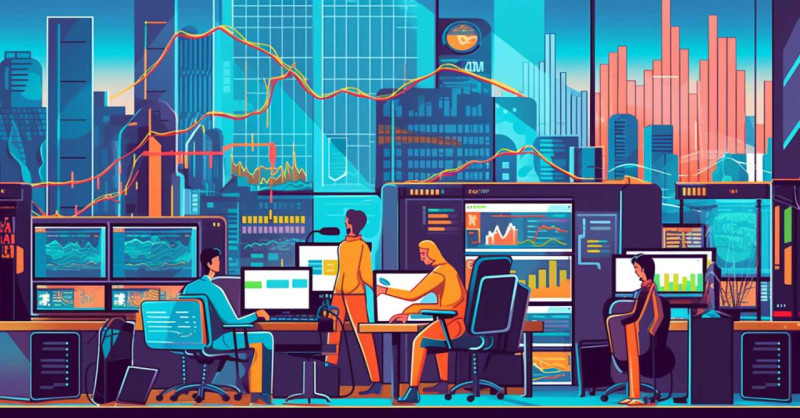
Popular Trading Terminals in the Market
Navigating the landscape of financial markets requires robust and reliable trading platforms. Several trading terminals have risen to prominence over the years, each with its unique features and catering to diverse trading needs. Let’s take a look at some of the most popular trading terminals, their features, and their respective pros and cons.
1. MetaTrader 4 and MetaTrader 5 (MT4 and MT5)
Brief Features:
* User-friendly interface.
* Supports automated trading through Expert Advisors (EAs).
* Offers a range of technical analysis tools.
* MT5 provides more timeframes, economic calendar, and supports more order types compared to MT4.
Pros:
* Highly customizable.
* Large online community for support, plugins, and tools.
* Supports algorithmic trading.
Cons:
* MT4 lacks some advanced features present in MT5 but is still more widely used.
* User interface might seem dated compared to newer platforms.
2. Thinkorswim (by TD Ameritrade)
Brief Features:
* Advanced charting tools.
* Comprehensive research and analysis tools.
* Integrated with a paper money feature for practice.
* Mobile trading available.
Pros:
* Ideal for both beginners and seasoned traders.
* Provides access to forex, stock markets, and options trading.
* Feature-rich with customizable workspace.
Cons:
* Can be resource-intensive and slow on older computers.
* Might be overwhelming for complete beginners.
3. NinjaTrader
Brief Features:
* Offers advanced charting and analysis capabilities.
* Supports automated trading.
* Integrated market replay feature.
Pros:
* Offers a free version with essential tools.
* Large online community and extensive third-party add-ons.
* Supports both futures and forex trading.
Cons:
* The premium version can be expensive.
* Limited asset coverage compared to other platforms.
4. cTrader
Brief Features:
* Designed for forex trading.
* Advanced charting tools.
* Supports algorithmic trading.
* Cloud integration for settings and profiles.
Pros:
* Intuitive user interface.
* Provides Level II Pricing and full market depth.
* Fast order execution.
Cons:
* More suitable for forex; might not cater to traders looking for multi-asset platforms.
* Fewer plugins and add-ons compared to MetaTrader.
5. Eikon (by Refinitiv)
Brief Features:
* Primarily a financial research platform.
* Offers real-time and historical data.
* News, analytics, and trading tools integrated.
Pros:
* Comprehensive data coverage and advanced analytics tools.
* Integrates seamlessly with other Refinitiv solutions.
* Ideal for professionals requiring in-depth research.
Cons:
* Expensive, more suited for institutional clients.
* Steeper learning curve for beginners.
In summary, the choice of a trading terminal often comes down to personal preferences, trading style, and the specific requirements of the trader. It's always a good idea for traders to test a platform using demo or trial versions before committing to ensure it aligns with their trading goals.

Mobile Trading Terminals vs. Desktop Trading Terminals
With the ubiquity of smartphones and advancements in mobile technology, the realm of trading has experienced a significant shift. Mobile trading terminals have been rapidly adopted, catering to the modern, on-the-go trader. Let's delve into this transition, the differences between mobile and desktop platforms, and the inherent advantages and limitations of each.
The Rise of Mobile Trading
Evolution of Technology: The capabilities of smartphones and tablets have expanded enormously, making them nearly as powerful as traditional computers in many respects.
Convenience: The appeal of accessing financial markets from anywhere, anytime has led to an uptick in mobile trading platform usage.
Democratization of Trading: Mobile apps have made trading more accessible to a broader audience, including younger traders and those in developing nations.
Key Differences Between Mobile and Desktop Platforms
Screen Size: Mobile devices have smaller screens, which might limit the amount of data and charts displayed compared to desktops.
Complexity: Desktop platforms often offer a wider array of tools, features, and customization options, while mobile apps prioritize streamlined, simplified interfaces for quick actions.
Battery Life: Continuous trading and monitoring on mobile can be battery-intensive, while desktops, being plugged in, don't face this concern.
Storage & Processing Power: High-end desktops can handle more intensive applications and store more data than mobile devices.
Advantages of Desktop Trading Terminals
Comprehensive Analysis: The larger screen allows traders to view multiple charts, indicators, and tools simultaneously.
Faster Execution: With a dedicated internet connection and superior hardware, desktops can offer quicker order executions, which is crucial for day traders.
Multi-tasking: Easier to operate multiple applications or platforms simultaneously, ideal for traders who use diverse tools or trade on several exchanges.
Advanced Features: Many advanced trading strategies and algorithms require the computational power and robustness of desktop platforms.
Limitations of Desktop Trading Terminals
Immobility: Traders are bound to a specific location and can't monitor or trade on-the-go.
Setup Time: Setting up multiple monitors, tools, and ensuring everything is working correctly can be time-consuming.
Advantages of Mobile Trading Terminals
Flexibility: Trade from anywhere with an internet connection. This is especially valuable during significant market events when quick action is required.
Notifications: Real-time alerts and notifications about market movements, news, or account changes can be sent directly to the mobile device.
Simplified User Experience: Mobile apps are designed to be intuitive, with a focus on user-friendly interfaces.
Quick Access: With biometric features like fingerprint or facial recognition, accessing a trading account can be faster.
Limitations of Mobile Trading Terminals
Limited Analysis Capabilities: Due to screen size restrictions, in-depth chart analysis might be challenging.
Risk of Distractions: Mobiles offer various distractions, from calls to app notifications, which could divert attention from trading.
Connectivity Issues: Relying on mobile data or public Wi-Fi networks might not always guarantee a stable connection.
Battery Constraints: Prolonged use of trading apps can deplete battery life rapidly.
In conclusion, both mobile and desktop trading terminals serve distinct purposes and cater to different trading needs. While the traditional desktop trading terminal offers an extensive and comprehensive trading environment, the mobile terminal is unbeatable in terms of flexibility and real-time monitoring. The modern trader often finds value in using both platforms in tandem, capitalizing on the strengths of each medium.
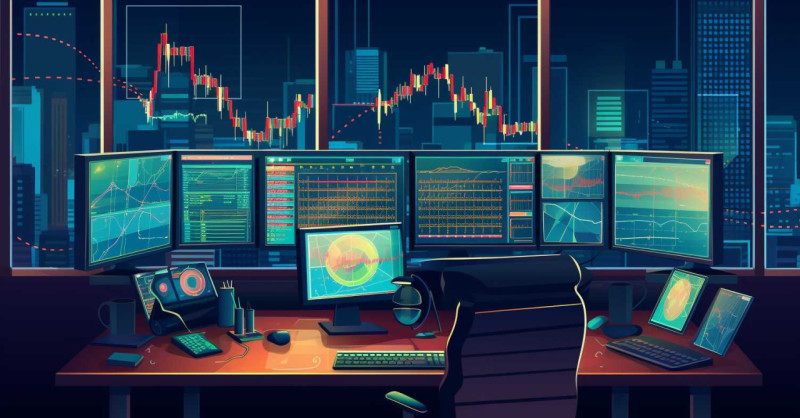
Conclusion
As we've traversed through the complexities and nuances of trading terminals, one fact remains irrefutable: these platforms are the backbone of today's financial markets. From the bustling floors of stock exchanges in bygone eras to the sophisticated digital interfaces of contemporary times, trading terminals have consistently evolved, mirroring the broader shifts in technology and market dynamics.
The reliance on these platforms isn't just a testament to our technological progress but an acknowledgment of the trader's need for precision, speed, and accessibility. Whether it's a multi-screen desktop setup dissecting minute market movements or a mobile application signaling a potential trading opportunity during a commute, these terminals form the nexus between the trader and the vast expanse of global markets.
But like all domains fueled by technology, stagnation is not an option. The trading platforms of today might be rendered obsolete by the innovations of tomorrow. For traders, brokers, and market enthusiasts, this underscores the importance of staying abreast of the latest trends and technological advancements in trading platforms. An updated trader not only harnesses the power of current tools but also remains prepared for future disruptions, ensuring they always remain a step ahead in the ever-competitive world of financial markets.
In wrapping up, as the tides of time change and markets continue their eternal dance of volatility, one constant remains – the indispensable nature of trading terminals. Embrace them, understand them, and most crucially, evolve with them. The future of trading beckons, and it's a journey worth embarking upon with the best tools at one's disposal.











